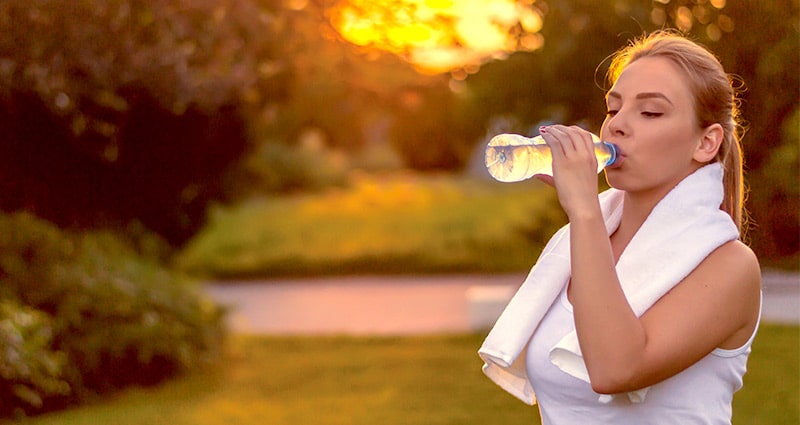With yard work, home projects, camping, hunting or sports, the ingredients for heat-related illnesses like heat cramps, heat exhaustion and heat stroke are all there.
When it’s hot, the body cools itself mainly by sweating and evaporating water from the skin. Heat-related illness occurs whenever there is a problem with either hydration or evaporation, which can lead to an increase in body temperature. It’s important to know and recognize the signs of heat-related illness to avoid any life-threatening issues.
Types of Heat-Related Illness
Heat cramps are an early sign of trouble. Symptoms include muscle cramps, dizziness, intense sweating and thirst. Moving to a cool place and hydrating with water are all you need to treat these.
Heat exhaustion is a more serious condition that can occur suddenly. Symptoms include nausea, dizziness, fatigue, heavy sweating and a weak, rapid pulse. Treat this condition by cooling the body – move to a cool place, hydrate, and use water or a fan to help cool down.
Heat stroke is a life-threatening condition that requires immediate treatment. It is associated with a body temperature of 104 degrees or higher, and symptoms can include changes in mental status (confusion), rapid breathing and increased heart rate. These are signs that must be recognized quickly in order to reduce the risk of death. If you witness these symptoms in an individual who is overheated, call 911. Then, move the person to a cool place, and immediately begin cooling the body using any means possible.
Here are 5 ways to prevent heat-related illness this summer:
1. Know the heat index.
The heat index is a measure of heat and humidity and can sometimes be much higher than the temperature. The higher the number, the harder it is to evaporate sweat and cool the body. When the heat index is 91 or above, take precautions, and stay hydrated and cool.
2. Hydrate before doing any outdoor activity.
To assess your hydration status, a good rule of thumb is to notice the color of your urine. Clear to pale yellow urine means your hydration is acceptable. If urine is yellow, you’re at risk. Alcohol increases urine output, which increases the risk of dehydration. If you drink alcohol, remember to drink equal amounts of water.
3. Be active early in the day or in the evening.
This obvious recommendation is not always feasible, but it’s a good reminder to plan strenuous or athletic activities and work for cooler parts of the day.
4. Wear loose fitting clothes. Remember that the body cools itself mainly by sweating and evaporating water from the skin. In order for sweat to evaporate, skin must be exposed to air. Tight fitting clothes often become soaked with sweat, and evaporation cannot take place.
5. Pay attention to your body. Become familiar with the signs and symptoms of heat cramps, heat exhaustion and heat stroke. If you or someone around you begins to experience symptoms, act immediately.
Chances are, you or someone you care about will spend significant amounts of time in this summer heat. Be smart – make plans in advance to prevent the complications of heat-related illness.




